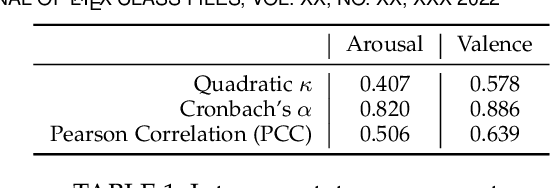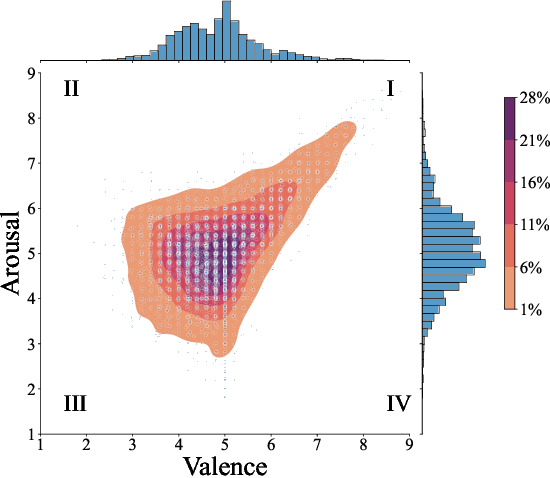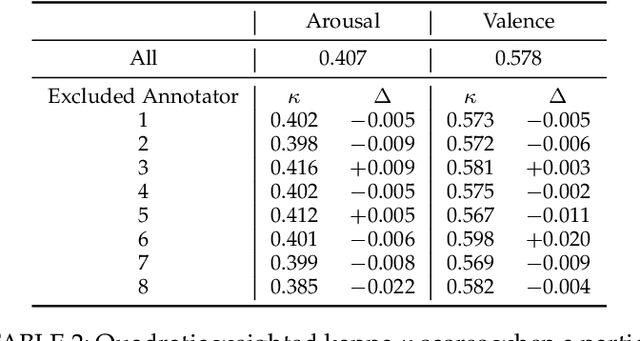Dynamics of Collective Group Affect: Group-level Annotations and the Multimodal Modeling of Convergence and Divergence
Paper and Code
Sep 13, 2024



Collaborating in a group, whether face-to-face or virtually, involves continuously expressing emotions and interpreting those of other group members. Therefore, understanding group affect is essential to comprehending how groups interact and succeed in collaborative efforts. In this study, we move beyond individual-level affect and investigate group-level affect -- a collective phenomenon that reflects the shared mood or emotions among group members at a particular moment. As the first in literature, we gather annotations for group-level affective expressions using a fine-grained temporal approach (15 second windows) that also captures the inherent dynamics of the collective construct. To this end, we use trained annotators and an annotation procedure specifically tuned to capture the entire scope of the group interaction. In addition, we model group affect dynamics over time. One way to study the ebb and flow of group affect in group interactions is to model the underlying convergence (driven by emotional contagion) and divergence (resulting from emotional reactivity) of affective expressions amongst group members. To capture these interpersonal dynamics, we extract synchrony based features from both audio and visual social signal cues. An analysis of these features reveals that interacting groups tend to diverge in terms of their social signals along neutral levels of group affect, and converge along extreme levels of affect expression. We further present results on the predictive modeling of dynamic group affect which underscores the importance of using synchrony-based features in the modeling process, as well as the multimodal nature of group affect. We anticipate that the presented models will serve as the baselines of future research on the automatic recognition of dynamic group affect.
 Add to Chrome
Add to Chrome Add to Firefox
Add to Firefox Add to Edge
Add to Edge